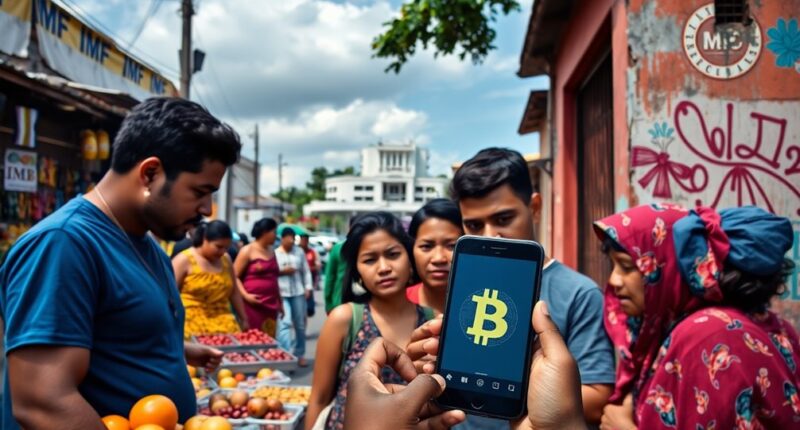As you consider the implications of Bitcoin's legal tender status in El Salvador, it's clear that the International Monetary Fund is raising alarms. They're calling for stricter oversight by the end of the year, highlighting concerns about financial stability. With Bitcoin's volatility posing risks to citizens, how will the Salvadoran government respond? The outcome could set a precedent for other nations grappling with cryptocurrency adoption. What happens next could reshape the landscape of digital currencies globally.

Since El Salvador adopted Bitcoin as legal tender in September 2021, it has sparked both excitement and skepticism among its citizens and the international community. The nation became the first to take such a bold step, and this decision has drawn mixed reactions. While the government has embraced Bitcoin, believing it could boost the economy, many Salvadorans remain doubtful about its viability. They worry about the financial stability risks highlighted by the International Monetary Fund (IMF), which has expressed serious concerns over the adoption of cryptocurrency as legal tender.
Despite these concerns, the Salvadoran government continues to support Bitcoin. They've made significant purchases, accumulating over $554 million in Bitcoin reserves, including 12 BTC bought amid a market dip. However, the IMF's influence has led to changes in policy, including an agreement to scale back Bitcoin adoption in exchange for a $1.4 billion loan. Following this, Bitcoin was reclassified as "voluntary legal tender," meaning it's no longer a mandatory currency. This adjustment seems to reflect the government's acknowledgment of the potential risks associated with Bitcoin, especially given its notorious price volatility.
The public's perception of Bitcoin remains largely skeptical. Surveys indicate that only about 7.5% of Salvadorans actively use Bitcoin for transactions, and a mere fraction of remittances are sent via this cryptocurrency. The government's Chivo wallet, initially intended to facilitate Bitcoin transactions, is now seeing reduced involvement from the state. This shift raises questions about the future of Bitcoin in everyday transactions and the government's role in promoting it.
Moreover, many citizens lack confidence in Bitcoin, which has fueled protests and criticism. Without adequate education on how Bitcoin works, the population struggles to see the potential benefits. To genuinely leverage Bitcoin for economic growth, the government must prioritize education and outreach to demystify the technology.
Looking ahead, the future of Bitcoin in El Salvador remains uncertain. While the government plans further purchases for 2025, the regulatory landscape is shifting. Bitcoin can no longer be used for tax payments, and businesses' mandatory acceptance of it has turned voluntary. This lays the groundwork for a more cautious approach to cryptocurrency.
El Salvador's experience is being closely monitored worldwide, as its success or failure could influence how other nations view Bitcoin adoption. Ultimately, the path forward will require balancing innovation with the stability that citizens crave.









